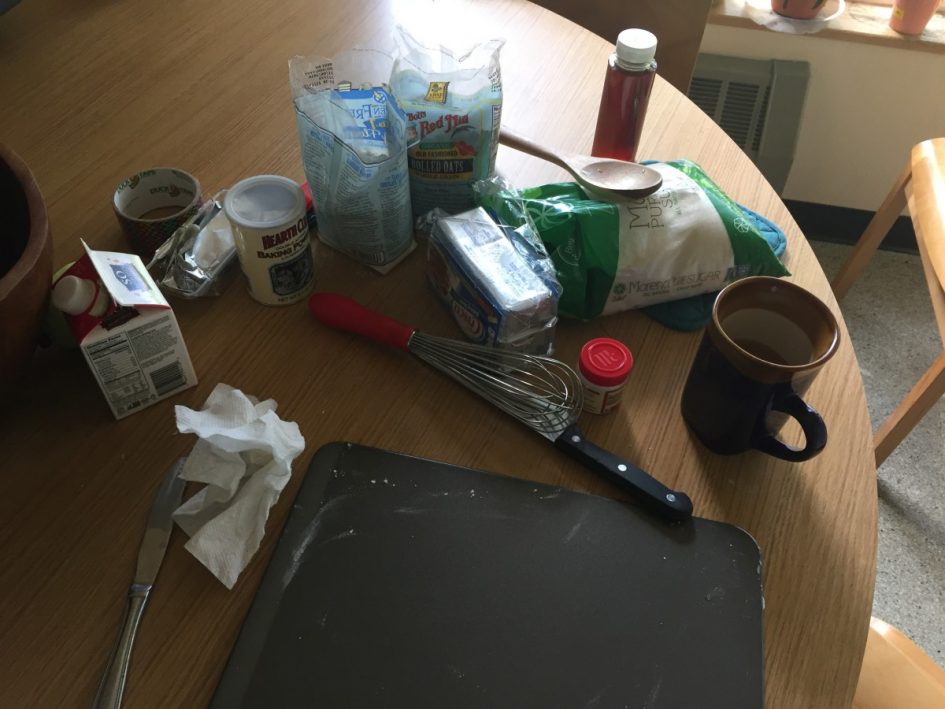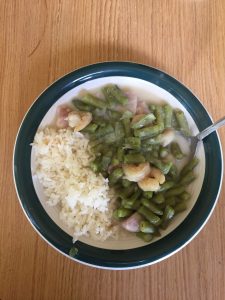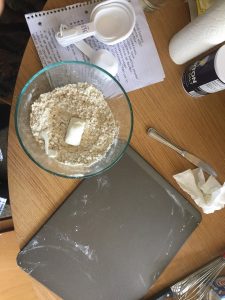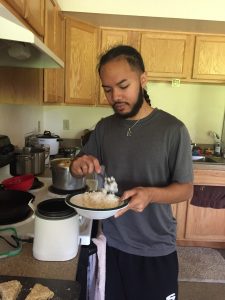This week I had the great pleasure of planning & executing a project with my dear friend, Roquin. We have had so many conversations about how our respective family histories intersect with food, and since we cook dinner for each other every other week, we have had the opportunities to share those foods and recipes with one another.
Roquin and their family are Chamorro, which is the name for the indigenous population of the U.S. Territory of Guam. Roquin grew up there, and since has been back and forth to visit family. A huge part of our discussions about our lives, both in the Seattle area and out of it (them in Guam and me in Japan) has related to our experiences with food.
And an important way they have cared for me as their friend is to feed me. In that way, we are similar. Roquin has cooked so many delicious meals for us, but this week we decided to choose a particular dish relating to our family heritage, and share a little bit of the history and context of the meal.
For Roquin, I made my family recipe for bannochs (or Scottish Oat Scones). It’s a recipe that my grandmother and mother used, and a food that is versatile and filling. The scones have been a part of Scottish history for a long time, which makes it hard to pin down an “authentic” recipe. Also, they’re not the kinds of scones you may imagine when you hear the word; they are dense, mainly comprised of oats, small, portable, and crumbly. They are intended to be a utilitarian dish, and one that can be easily packed up and saved for later. Bannochs would have been a provision for Scottish soldiers in the Battle of Culloden in 1745, a battle in which many of my ancestors were killed before remaining members fled British control to America or scattered through Scotland.
But my love of bannochs doesn’t really come from its historical relation to my family; mainly, I love them because I remember sitting in the kitchen while my mother baked them and whipped lavender honey butter to spread on top. I remember sitting at the kitchen table doing my homework while the smell of toasting oats filled our home, and the air grew warmer with the heat of the oven. I learned to cook by watching my mom, and so when I went to make these scones for the first time, I was less interested in following the recipe and more focused on the familiar sensations of kneading the dough and forming the disc to be cut into triangles. I could feel my mother and her mother with me, and all the women who labored before me. There was something about making a dish so connected to my family that felt incredibly important and emotional.
For me, Roquin made a delicious meal to be served over rice. It is called Tinaktak, and combines coconut milk, shrimp, green beans, and taro root. It made for a delicious breakfast, which we sat, ate, and talked over while our bannochs baked. For Roquin, the dish had as much familiarity and significance as my scones did to me. To share them with a good friend was not just a nice thing to do for them, but a healing and connecting process for me.





May 2, 2017 at 5:51 pm
So much love <3